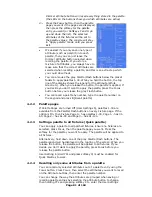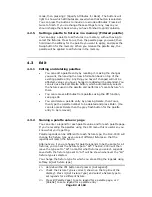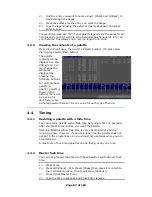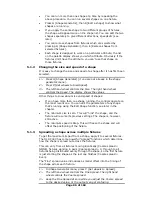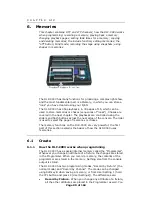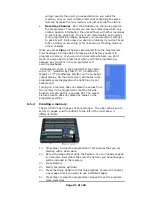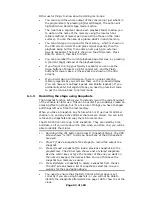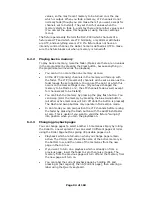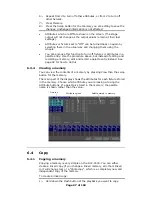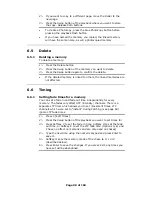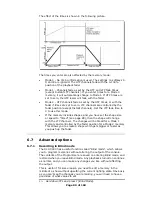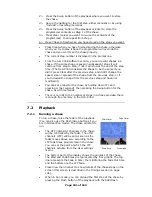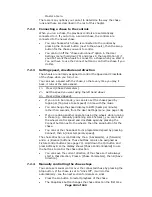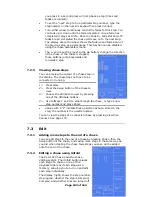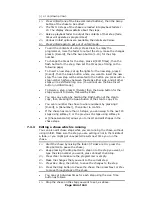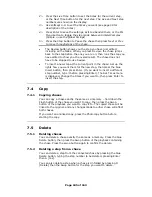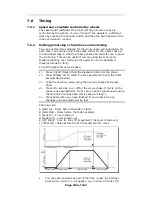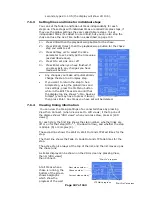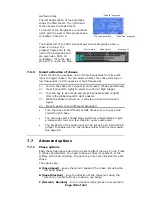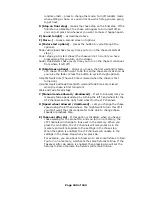
Page 94 of 163
values, so the most recent memory to be turned on is the one
which is output. When you fade a memory, LTP channels do not
normally fade (though you can make them if you want, except for
channels set to Instant). They set their full values when the
memory starts to fade in, and stay there until another value is set.
(You can set the value this happens at using the User settings
menu).
The fixture personality file tells the DLC-C003 which channels of a
fixture are HTP and which are LTP. Normally, only dimmer attributes
are HTP, and everything else is LTP. If a fixture does not have an
intensity control channel, the Gobo channel is defined as HTP to make
sure the fixture blacks out when a memory is turned off.
6.2.2
Playing back a memory
To play back a memory, raise the fader. (Make sure there are no values
in the programmer by pressing the Clear button, because anything in
the programmer will override the playback).
•
You can turn on more than one memory at once.
•
All the HTP (intensity) channels in the memory will fade up with
the fader. The LTP (movement) channels will be set as soon as the
fader leaves the zero position. You can set the point at which this
occurs on the User settings menu. (If you have changed the
memory to be Mode 1 or 2, the LTP channels fade as well, except
for channels set to be Instant).
•
You can Flash the memory by pressing the grey flash button. You
can Swop (solo) the memory by pressing the blue Swop button
(all other active memories will turn off while the button is pressed).
The Flash and Swop buttons only operate in Normal Run mode.
•
In Run mode you can pre-position the LTP channels before raising
the fader by pressing the Flash button with the Add/Flash Master
at zero. This is useful if you want to yplid the fixture “swinging”
into position when you turn the playback on.
6.2.3
Changing playback pages
You can change pages to select another 15 memories simply by rolling
the Roller to a new segment. You can select 3 different pages of roller
using the Roller Page buttons giving 30 possible pages in all.
•
Playbacks which are turned on when you change page remain
active. The VDU screen shows the name of the active memory in
the bottom row, and the name of the memories from the new
page in the top row.
•
If you want to turn on a playback which is already on from a
previous page, lower the fader to zero then raise it again. The
memory from the previous page will turn off and the memory from
the new page will turn on.
•
You can label the current playback page by holding YPL and
pressing G [Set Legend], then A [Current page], then entering a
label using the Qwerty keyboard.


